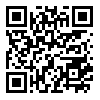Volume -
3 , - : 101-107 |
Back to browse issues page
Download citation:
BibTeX | RIS | EndNote | Medlars | ProCite | Reference Manager | RefWorks
Send citation to:



BibTeX | RIS | EndNote | Medlars | ProCite | Reference Manager | RefWorks
Send citation to:
Medical Stability of Color Effects in Eyes. 3 https://doi.org/10.58209/gmjm.2.3.101
URL: http://daneshafarand.org/article-1-206-en.html
URL: http://daneshafarand.org/article-1-206-en.html
Abstract: (1407 Views)
Intoduction: The retina, like other parts of the body, gets tired when it is in opposite positions, and in the meantime, red light makes the eye more tired than green and blue. If we stare at a small colored spot for a while and then look at the white pages instead of the colored spot, we will see the complementary color of the colored spot. In this way, the eye that is tired of the green color will see the color of the magenta instead of green, and if the spot is red, the eye will see the cyan when changing. The view of two-colored areas adjacent to each other changes under different conditions, for example, yellow and red on a dark background are much more visible than on a light background. This phenomenon is reversed for green and blue.
Conclusion: A white spot appears on the yellow background as blue and if it is on the red background green and finally on the green background a pale pink. During the day, eye sensitivity to colors will vary depending on the food a person consumes. For example, eating carrots enhances vision in low light.
Conclusion: A white spot appears on the yellow background as blue and if it is on the red background green and finally on the green background a pale pink. During the day, eye sensitivity to colors will vary depending on the food a person consumes. For example, eating carrots enhances vision in low light.
Article Type: Analytical Review |
Subject:
Biotechnology
| Rights and permissions | |
 |
This work is licensed under a Creative Commons Attribution-NonCommercial 4.0 International License. |






